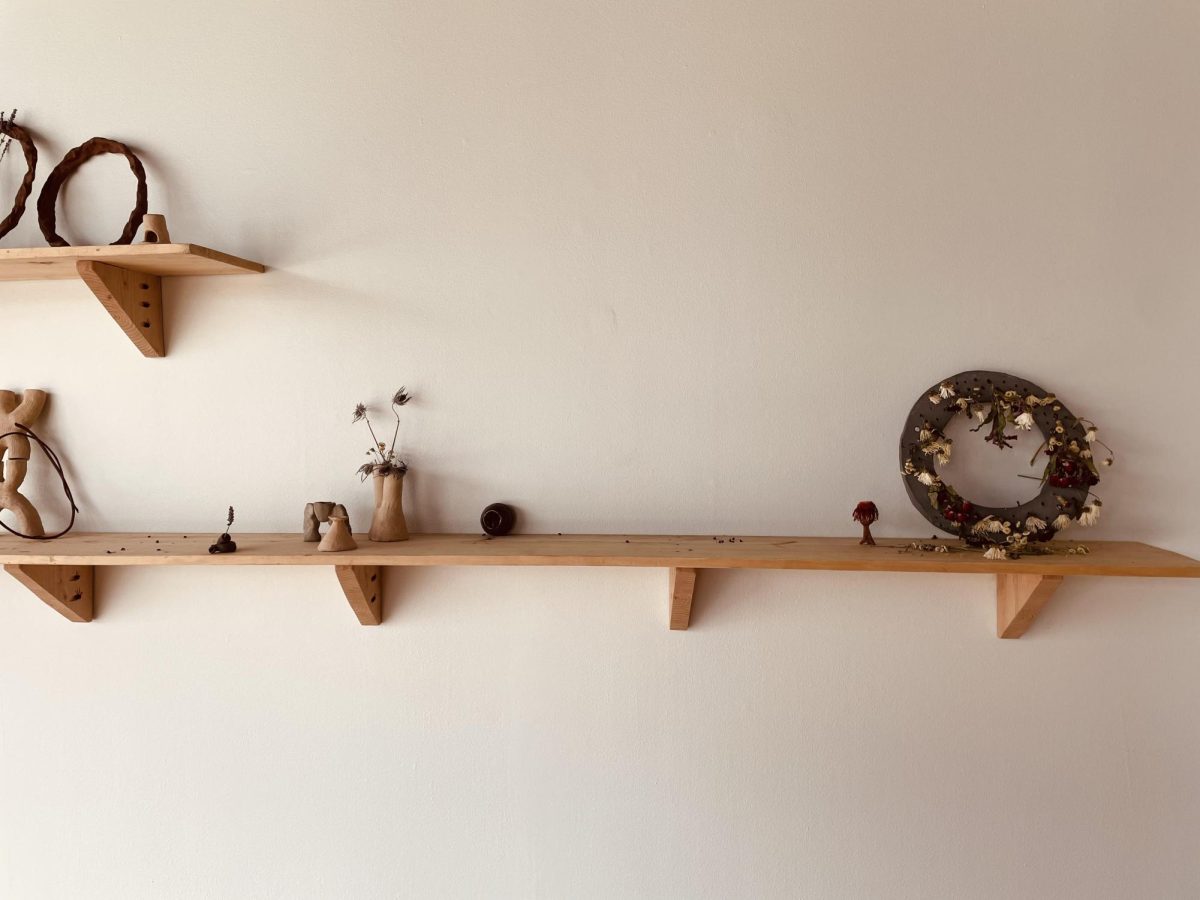Since ancient times, gifting flowers has been a universal symbol of love and remembrance that cuts across cultural boundaries. Meanings attributed to flowers and the act of exchanging them speak to the innate desire of humanity to connect with one another through nature. The exhibition “I Brought You Flowers/Te Traje Flores” at the University of Chicago Arts Incubator delves into how the act of gifting flowers is significant to individuals and communities and unearths stories fossilized in flora.
The symbolic importance of flowers dates back centuries. Both the white and blue lotus were believed to be sacred in ancient Egyptian society, often pictured in artworks and found scattered over Pharaoh Tutankhamun’s body when his tomb was opened in 1922. Flowers were also utilized by the Greeks as props for storytelling and as decoration in ceremonial events. In the 14th century, the Turkish tradition called sélam, a game of gifting flowers to send a message interpreted through rhymes connected to each flower, initiated the development of floriography—the language of flowers. Several centuries later, in Victorian England, arranging flowers and exchanging them became a form of communication amidst that society’s growing interest in botany and disdain for outward emotional display. It became a widely accepted notion to deem feelings straightforwardly conveyed tasteless, and thus the association of flowers with symbolic meanings was quickly adopted to facilitate this celebrated subtlety. Entire dictionaries were compiled to decipher the meanings behind different flowers, enabling people to craft elaborate messages through carefully chosen blooms.
The “I Brought You Flowers/Te Traje Flores” exhibition draws inspiration from Nahua and Mayan codices. These ancient texts provide historical accounts of people utilizing botanical imagery for ceremonial and quotidian purposes in Mesoamerica. For instance, the Florentine Codex, a 16th-century manuscript written by the Franciscan friar Bernardino de Sahagún, documented trays in royal ceremonies that were heaped with the finest flowers. “The flower with the sweetest aroma” was placed “in the center,” and “the fragrant yellow flower” was considered “the most precious of all.” Necklaces, bands, and garlands of flowers were showered upon the Spaniards who arrived in Xoloco as “gifts of welcome” from Moctezuma II. The codices also recorded the use of flowers as offerings to deities in religious ceremonies and symbols of life and fertility.
Grounded in these historical sources, artist Marcela Torres’s exhibition sheds light on the significance of floral symbolism in indigenous cultures and champions its enduring relevance in contemporary artistic endeavors. A series of ceramic pieces molded in the shape of flowers, with the entire stem included, serves as the centerpiece of the exhibition. These flowers encompass narratives of self-offerings, homages to ancestors, and expressions of gratitude for the earth.
“I Brought You Flowers/Te Traje Flores” puts traditional craftsmanship in modern conversation. By chaining together aspects of heritage and nature, it presents the nurturing essence of gifting on a botanical canvas. Historical narratives contribute to a discourse that invites viewers to realize the capacity of humanity’s cultural traditions and the presence of nature in every step of their establishment.









